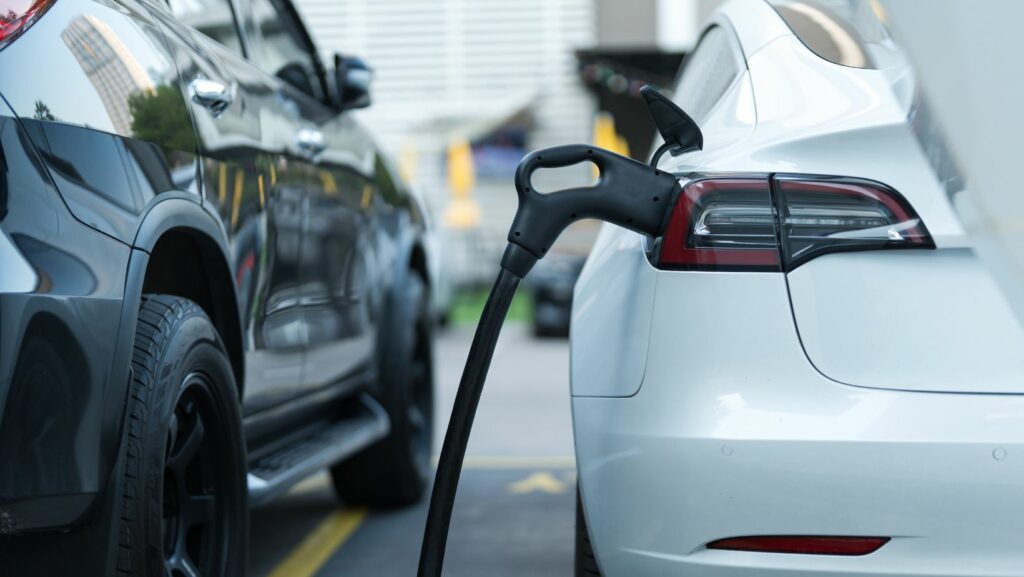Electric vehicles (EVs) are becoming increasingly popular for their eco-friendly benefits and advanced technology. With fewer emissions and lower fuel costs, many people see them as the future of transportation. However, as EVs grow in number, they bring unique challenges when involved in car crashes. Understanding these differences is important for both EV drivers and those who share the road with them.
From battery-related risks to differences in weight and structure, EVs change the way accidents are handled. Awareness of these factors can help you prepare for the unexpected and know what steps to take if you’re involved in a crash. Knowing your rights and responsibilities is key in navigating the aftermath of an EV accident.
The Impact of EV Weight on Collisions
Electric vehicles are often heavier than their gas-powered counterparts due to the large batteries they carry. This additional weight can lead to more severe damage in crashes, both for the EV and the other vehicle involved. Heavier cars generate more force during a collision, which may increase the likelihood of serious injuries. Moreover, the structural design of electric vehicles may also influence their crash performance and safety outcomes.
For drivers of smaller vehicles, this can mean greater risks when in an accident with an EV. Understanding this dynamic highlights the need for extra caution when driving near these vehicles. Insurance claims and damage assessments may differ due to the structural differences in EVs.
Battery Fires: A Unique Risk in EV Crashes
One of the most significant challenges in EV accidents is the risk of battery fires. Unlike gasoline, which burns out relatively quickly, lithium-ion batteries can reignite hours or even days after a crash. These fires are difficult to extinguish and require specialized training for emergency responders. As a result, ensuring proper safety protocols and awareness among first responders is crucial to effectively manage these incidents.
Battery fires not only pose safety risks but can also complicate the legal aspects of an accident claim. Proving liability in cases involving EV fires often requires detailed investigations into the battery’s condition and maintenance history. Consulting an experienced Arlington Heights car accident lawyer can help you navigate these complexities and ensure you’re properly compensated.
High Voltage Systems and Safety Concerns
Electric vehicles operate using high-voltage systems, which can pose additional risks after a crash. Damaged wiring or compromised battery packs may expose drivers, passengers, or first responders to electrical hazards. These risks require special handling during rescue operations to avoid further injuries.
For EV owners, knowing how to shut down the electrical system can help prevent accidents from worsening. Many manufacturers include emergency disconnect features to make the process easier. Familiarizing yourself with these safety measures before an accident occurs can save valuable time in a critical moment.
Repair Costs and Insurance Considerations
EVs often come with higher repair costs due to their specialized parts and technology. Replacing or repairing a damaged battery pack can cost thousands of dollars, which may impact insurance claims. Not all repair shops are equipped to handle EV repairs, potentially leading to delays in getting your vehicle fixed.

These factors make it important to review your insurance policy to ensure it covers EV-specific repairs and replacement costs. Working with an insurance company familiar with EVs can make the claims process smoother. Being proactive about your coverage can prevent financial surprises after an accident.
Noise Levels and Pedestrian Safety
One unique challenge of EVs is their low noise levels, especially at lower speeds. While this makes them more pleasant to drive, it can create risks for pedestrians who might not hear the vehicle approaching. This is particularly concerning in areas with high foot traffic, like city streets or school zones.
To address this, many EVs now come equipped with artificial noise generators to alert pedestrians. Even so, drivers should remain vigilant and use extra caution in situations where pedestrians might be caught off guard. Awareness of this issue can help prevent accidents and improve safety for everyone on the road.
Different Driving Dynamics in EVs
Electric vehicles (EVs) bring distinct driving characteristics compared to traditional gas-powered cars. Awareness of these differences can help drivers adapt more effectively and drive more safely. Here are some key aspects of EV driving to consider:
- Regenerative braking slows the car as soon as the driver eases off the accelerator, which can catch other drivers off guard during stop-and-go traffic.
- Immediate torque delivery enhances performance but can result in faster acceleration than expected, potentially leading to accidents.
- Drivers transitioning from gas-powered cars to EVs should take the time to understand these differences by practicing in safe environments.
- Reviewing the vehicle’s manual helps new EV drivers avoid common mistakes and better understand unique features.
The Role of Technology in EV Crashes
Most EVs are equipped with advanced driver assistance systems (ADAS), such as automatic emergency braking and lane-keeping assistance. While these features are designed to enhance safety, they’re not foolproof and can sometimes fail or malfunction. In some cases, these failures can even contribute to an accident rather than prevent one.
When ADAS systems are involved in a crash, determining liability can be more complicated. Manufacturers, software developers, or even service providers may share responsibility if the technology fails to perform as expected. This complexity makes it even more important to work with legal experts who understand the nuances of EV-related claims.
Managing the Challenges After an EV Accident
Suppose you’re involved in a crash with an EV, whether as the driver or another party, it’s important to act quickly and carefully. Document the scene with photos, gather contact information from witnesses, and exchange insurance details with the other driver. Be sure to note whether the vehicle involved was an EV, as this can impact the claims process.

Following up with legal representation ensures you’re prepared to handle any unique challenges associated with EV accidents. An attorney with experience in handling EV claims can help you understand your rights and fight for fair compensation. Being proactive in the aftermath of a crash can save time and stress as you navigate the legal and insurance processes.

